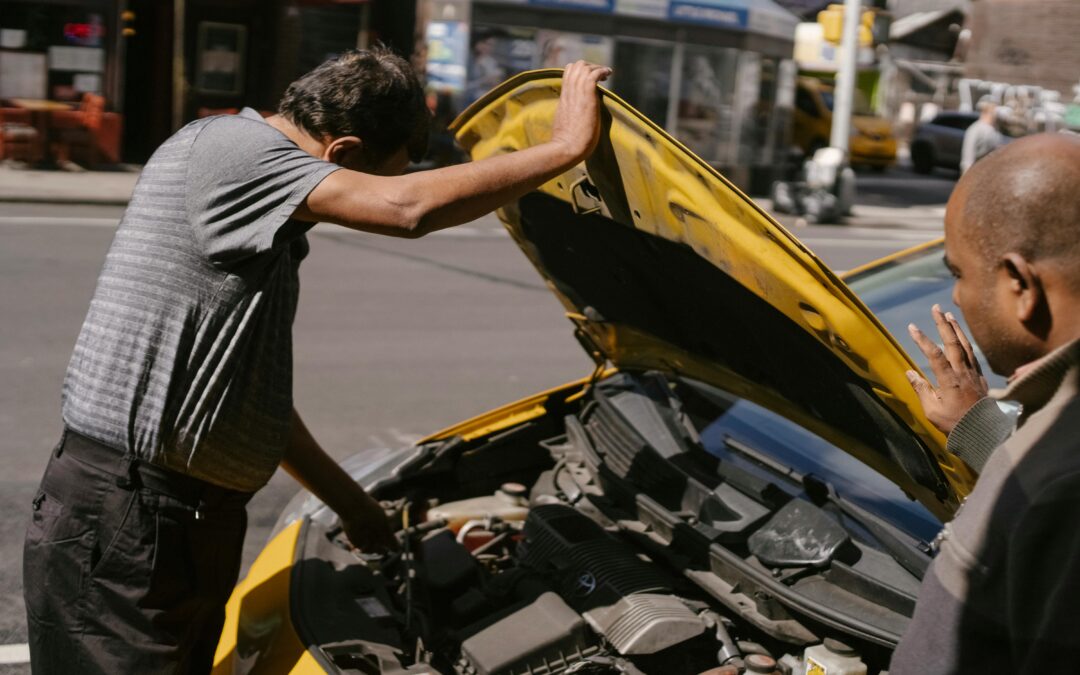The 1955-1957 Ford Thunderbirds are timeless classics, embodying the style and engineering prowess of American automotive history. However, like any vintage vehicle, they come with their share of mechanical and electrical quirks. For owners and restorers, knowing how to troubleshoot these common issues is essential to maintaining the car’s performance and value. Here’s a comprehensive guide to identifying and fixing typical problems found in these classic Thunderbirds.
1. Overheating
Overheating is a common issue in classic cars, including the ’55-’57 Thunderbirds, primarily due to their age and design of the cooling system.
Causes and Fixes:
- Radiator blockage: Over time, radiators can accumulate deposits that block coolant flow. Flushing the radiator can often solve this problem.
- Thermostat failure: A malfunctioning thermostat can prevent coolant from circulating correctly. Replacing the thermostat is typically a straightforward and inexpensive fix.
- Water pump issues: If the water pump is failing, it won’t circulate the coolant efficiently. Listen for noises from the pump and check for leaks as indicators that replacement might be necessary.
2. Electrical Problems
Electrical issues are notoriously tricky in classic cars due to aging wiring and outdated components.
Causes and Fixes:
- Worn wiring: Inspect the wiring harness for signs of wear or damage. Replacing old, brittle wiring can prevent a multitude of electrical problems.
- Faulty generator: The original generators in these models can fail. Consider upgrading to an alternator system for more reliability and better charging capacity.
- Bad ground connections: Ensure all ground connections are clean and secure; a poor ground can cause erratic electrical behavior.
3. Transmission Issues
The 1955-1957 Thunderbirds were equipped with either a manual or an automatic transmission, each with its potential faults.
Causes and Fixes:
- Slipping gears (automatic): This can be caused by low transmission fluid or a failing torque converter. Check fluid levels first, then consider having the converter and transmission checked by a professional.
- Hard shifting (manual): Often due to a clutch that needs adjustment or replacement. Ensure that the clutch linkage is lubricated and properly adjusted.
4. Brake Problems
Brakes are a critical safety feature that can degrade over time, especially in vehicles that aren’t regularly driven.
Causes and Fixes:
- Worn brake pads or shoes: Replace these as needed to maintain braking performance.
- Corroded brake lines: Inspect the lines for corrosion or leaks and replace them with new lines to ensure safety and reliability.
- Master cylinder failure: If the brake pedal feels spongy or sinks to the floor, consider inspecting or replacing the master cylinder.
5. Fuel System Issues
Fuel system problems can prevent the engine from running smoothly, or at all.
Causes and Fixes:
- Clogged fuel filter: Replace the fuel filter regularly to prevent blockages that can starve the engine of fuel.
- Corroded carburetor: The carburetor may need to be rebuilt or adjusted if the engine is running rough or stalling.
- Old fuel lines: Replace brittle or leaking fuel lines to prevent fuel leaks and potential fire hazards.
6. Rust and Body Deterioration
Rust is the bane of any classic car’s existence, particularly in those that haven’t been stored properly.
Causes and Fixes:
- Regular inspections: Check for rust in common problem areas like the wheel wells, floor pans, and trunk. Early detection is key.
- Proper sealing and painting: Treat any rust spots immediately and ensure that all body parts are properly sealed and painted to prevent further rust.
- Moisture control: Store the vehicle in a dry environment and use a dehumidifier in humid climates to reduce moisture buildup.
7. Engine Starting Issues
Difficulty in starting the engine is a common problem that can have various causes.
Causes and Fixes:
- Weak battery: Test the battery and replace it if necessary.
- Faulty ignition switch: If the ignition switch is faulty, it can lead to intermittent or no start. Replacing the switch can resolve this issue.
- Poor carburetor adjustment: Adjusting the carburetor for the correct fuel/air mix can improve start-up performance.
Conclusion
Maintaining a 1955-1957 Ford Thunderbird requires a blend of mechanical knowledge, patience, and the right tools. Many of the common issues these cars face are manageable with some basic troubleshooting skills. Regular maintenance and timely repairs are crucial to preserving these vintage vehicles. Whether you’re an experienced mechanic or a dedicated enthusiast, understanding how to address these common issues will ensure that your Thunderbird continues to turn heads for years to come, just as it did when it first hit the streets in the mid-1950s.

